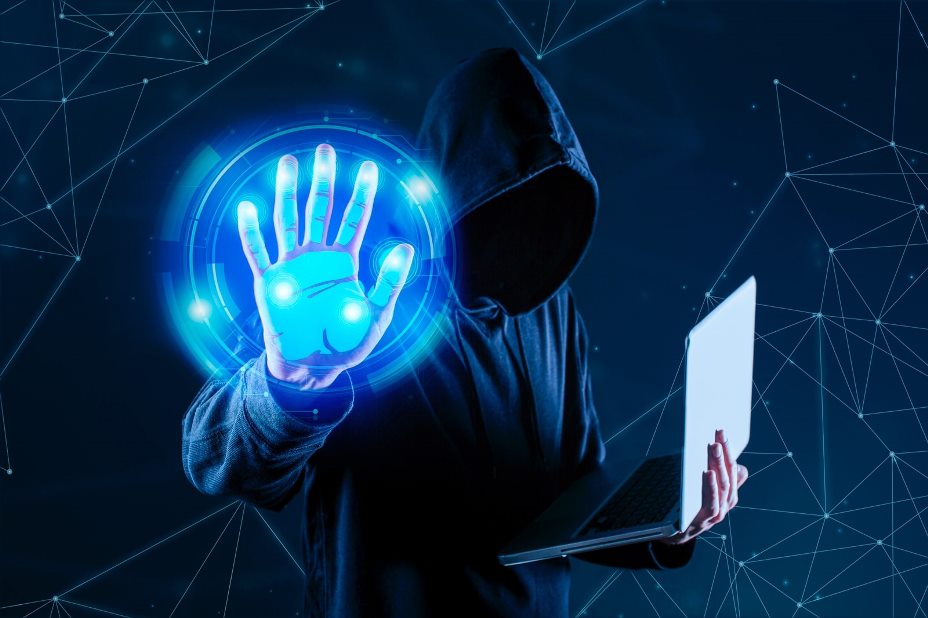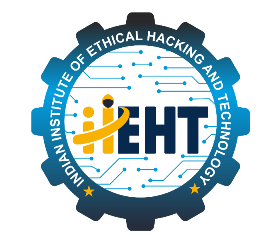What Is Cyber Terrorism?
Date: Jan 16, 2023

Cyber Terrorism
Abstract
Cyberterrorism is the term used to describe illegal assaults and threats of attacks against computers, networks, and information held within with the intention of intimidating or coercing a government or its citizens into furthering covert political or illegal social and religious goals. These assaults result in property or person harm or stir up racial tension. A few examples include explosions, aircraft disasters, and significant losses. Cyber terrorists are known to plan their plots, raise money, and disseminate their ideology online. We are aware that cyberterrorism—using the Internet to frighten people's minds—is a crime that has recently become more prevalent. It is admirable that one of the effective initiatives made to create penalties for these types of offences was the adoption of the Information Technology Act, 2000, into the Laws. Innovative rules and international norms are required for preventive action.
Introduction
Cyber terrorism encompasses to other terms cyberspace and terrorism. Cyberspace is the environment created by the internet. Cyber terrorism includes the terrorist activities intended to damage or disrupt vital computer systems. Cyber terrorism includes computer-based attacks aimed at disabling vital computer systems so as to intermediate or harm a government or section of the population. When people first started using the internet, hackers would inject viruses like Trojan horses, rootkits, e-mail bombs, etc. into the computers of their targets. All of these dishonest actions were taken to gain access to the target computer's data and then delete it.
The characteristics of cybercrimes changed over time. Nowadays, common cybercrimes include pornography, stalking, money laundering, hacking, etc. Today, the majority of crimes are committed online. Below, it will be further examined how cybercrimes differ from regular crimes in terms of speed, difficulty in identifying the perpetrator, and a number of other features. Cyber terrorism is a phenomenon where crimes are conducted to a comparatively high amount to achieve political purposes and ideologies, in contrast to cybercrime, which is undertaken to achieve personal or individual motives. This is due to the fact that a terrorist act often cannot be started and effectively carried out by a single person. Technology and the internet are used in cyber terrorism to spread terror throughout society. There have been a number of occasions where information discovered online supported a terrorist strike.
MEANING OF CYBER TERRORISM
Cyberspace can be thought of as the e-medium of computer networks that enables online communication for the purpose of interaction among people from various walks of life, exchanging ideas, imparting information, providing social help, undertaking businesses, producing inventive media, running games, having political discussion, and so forth. However, there is a possibility that the data may be misused. Whatever benefits technology may have, it is improbable that those benefits will outweigh any negative effects. What constitutes cyberterrorism and how is it destructive to society as a whole are the key questions at hand. In simple words, cyberterrorist acts are intended to advance political or propagandist beliefs through coercion, extortion, fear, etc. Therefore, cyber terrorism is the use of the internet to engage in criminal activity to the point where it may result in person or property harm or death (s). Cyber terrorists frequently target computer networks, gain unauthorized access to data, destroy networks, and maybe utilize the information obtained to advance their political ideas.
IMPACT OF CYBER TERRORISM ON THE PHYSICAL WORLD
According to a large number of academics, cyber terrorism cannot be employed as a weapon of physical mass destruction. Physical destruction refers to terrorist acts that result in fatalities, atrocities against people, destruction of property and population, such as the attack on the World Trade Centre on September 11, 2001 in the United States of America or the Taj Hotel in Mumbai, India, on November 26, 2008, etc. Some people believe that cyber terrorism is incapable of carrying out physical attacks or destruction like the two examples of physical devastation given above. On September 11, 2001, a high-profile terrorist attack at the World Trade Centre in the United States was followed by a cyberterrorist attack. The terrorist assaults carried out online or through other computer networks with the intention of destroying crucial infrastructures in order to endanger human life or cause a national uprising have increased media attention to the possible dangers of cyber terrorism. Depending on the goal they are trying to achieve, such actions may be direct or indirect. For instance, attacks on infrastructure could be classified as direct while those on financial growth could be classified as indirect. Everyone has likely quick and unhindered access to online involvement that has been obtained illegally. According to some consultants, the internet's web ensures the fusion of the physical and virtual worlds, which affects both realms of reality. This is a strong incentive for countries to use the internet as a substitute for terrorist organizations in order to further their own personal and political goals. Different countries use their political clout and resources to further their political agendas, but because the scope of the operation is so large, the truth about it is likely to come to light. Cyber terrorism, on the other hand, is likely to conceal identities, which attracts these types of people.
INDIAN CONTEXT OF CYBER TERRORISM
India has a very low level of awareness of cyber terrorism. The entire dark network serves as a haven for numerous acts that fall under the category of cyber terrorism. The website of India's renowned investigating agency, The Central Bureau of Investigation, was breached in 2010 by a group of Pakistani hackers known as the "Pakistani Hacker Army." In addition, the former Indian President made a point of highlighting the issue of cyber terrorism while delivering his talk in 2005. However, India's response to this issue has been subdued, and there is currently no substantial system that can be classified as a cyber security system.
Digital law authorities and social science experts in India do not launch enough investigations to resolve the significant problem of virtual psychological oppression, despite the fact that the complexity of digital crimes has the capacity to attract digital criminologists from all over the world. The 26/11 attacks on Mumbai's Taj Hotel may also be seen as a cautionary tale emphasising the need for efficient systems to monitor cyber-terrorism attacks.
An examination into the 26/11 Mumbai attacks found that Pakistani extremists were able to access the property using online resources that made the map, floor plan, number of attendees, and other information available. In addition, the vast majority of the 26/11 location composition was probably meticulously planned using Google Earth.
Cyber laws to Deal with Cyber Terrorism in India
The bomb explosions in Varanasi in 2010 and Mumbai's Zaveri Bazaar in 2011 put pressure on the government to implement a robust cyber security system. This prompted the Indian government to alter the current Indian Information Technology Act, 2000 in order to strengthen digital security and ban cyber terrorist activities online.
India became the twelfth nation in the world to enforce digital law with the revision to the Information Technology Act in 2000. Here are some of its key sections on cyberterrorism.
• Section 66 F of IT prescribes punishment for cyber terrorism.
Whosever, with intent to threaten the unity, integrity, security or sovereignty of India or to strike terror in the people or any section of the people,
Denies or causes the denial of access to any person authorized to access a computer resource, or attempts to penetrate or access a computer, resource without authorization or exceeding authorized access,
Whosever commits or conspires to commit cybercrime terrorism shall be imprisonment which may extend to imprisonment for life.
MAJOR CYBER TERRORISM INCIDENTS
• The Ahmedabad bombings in 2008 were a series of twenty-one bomb explosions that occurred over a period of seventy minutes on each of the city's twenty-six Gregorian calendar months. Over 200 individuals were injured, and 56 people were put to death. The social and economic center of Gujarat state and a sizable portion of western India is Ahmedabad. The effects were thought to be of low intensity and to be similar to those that occurred in the city the day before. However, monotheism belligerent group Harkat-ul-Jihad-al-Islamic has claimed responsibility for the attacks. Several TV channels previously reported receiving an email from a terror group referred to as the Indian group force claiming responsibility for the terrifying attacks. The explosions were linked by the Gujarat police to the alleged genius Mufti Abu Bashir and nine other individuals.
• A 12-year-old boy successfully breached the security of the massive Roosevelt Dam on the Salt River in Arizona, USA, in 1998. He had the opportunity to release swelling waters that would have submerged Mesa and Tempe, endangering 1 million people in any case.
Conclusion
The Information Technology Act, 2000's preamble explains that it was passed with the intention of providing legal recognition for transactions carried out using various online business and electronic data trade proposals. Other Acts have also amended the Indian Penal Code,1860, Indian Evidence Act,1872 and The Bankers Books Evidence Act,1891, in order to promote legal recognition and regulation of business activities. From this, it can be inferred that the law can't stand to be static; it needs to adapt to changing circumstances, i.e., with the development of technology, the government has adopted supportive legislation. But the issue is that authorities still treat this form of cyberterrorism with a great deal of laxity. Despite the fact that technology assistance enables the big attacks, this subject has never been a top concern.
The general public has to be educated about the risks of the internet and how to deal with a situation brought on by cyberterrorism. The establishment of a secure digital space that the public wants requires the government to take action.



